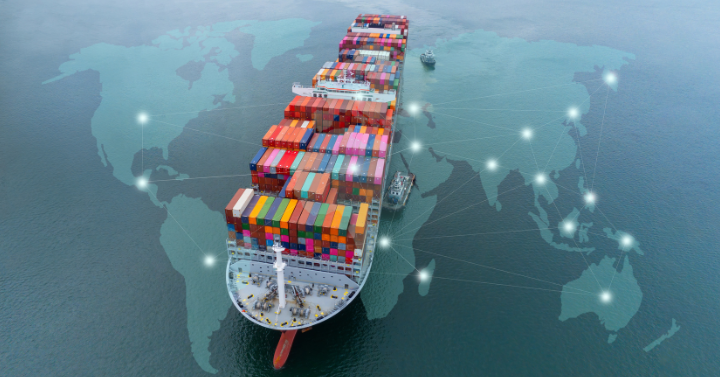At Kline + Company, we have been tracking the specialty chemicals industry for over 65 years. The recent imposition of tariffs has introduced significant uncertainty into the specialty chemicals sector. However, the impact varies depending on the specifics, as many chemicals are exempt from these tariffs based on their exact product codes.
The potential impacts could include:
- Increased costs for manufacturers
- Price hikes for consumers
- Disruption of global supply chains
- Reformulation with new ingredients or chemicals
- Rethinking manufacturing footprints
The uncertainty surrounding the tariffs creates both challenges and opportunities. Different sectors within the specialty chemicals industry will navigate this in various ways, resulting in both winners and losers.
Personal Care
Sunscreen filters such as zinc oxide, titanium dioxide, vitamins A, C, and E, protein derivatives, fatty acids like azelaic acid and sebacic acid, petroleum jelly, waxes, and certain surfactants are exempt according to Annex II (Annex-II.pdf). However, many other ingredients are not on the exemption list. This situation potentially creates opportunities for contract manufacturers to produce in-region using existing formulations. There is also potential for supplier switching and reformulations, although these changes may result in longer timelines to market.
New tariffs on personal care ingredients could reverse a trend that has been reshaping the competitive landscape in the industry: the growing market share of Chinese suppliers. With the potential for higher taxes on cosmetic ingredients from China, these suppliers may lose their price advantage.
Pharmaceuticals
Pharmaceuticals are currently exempt; however, there is an ongoing investigation into the potential imposition of tariffs in the future. In the event this occurs, branded drug manufacturers might absorb costs in the short term, but generic drugs, which have thin margins, could see price hikes for consumers. Tariffs could lead to an increased U.S. manufacturing footprint, although it will take years for these efforts to be fully realized.
When it comes to APIs and excipients—the essential components of pharmaceutical products—current tariff regulations are complex and vary. While tariff rates on key APIs fluctuate depending on the country of origin, they are notably higher for imports from China. The situation with excipients is similarly nuanced: while some, such as modified starches and formulated tablet coatings, are generally exempt from tariffs, others like microcrystalline cellulose (MCC) and lactose may incur duties based on their source country.
Although excipients typically represent a small fraction of the total cost in a finished drug formulation, these tariffs could still influence sourcing strategies and shift the competitive dynamics within the pharmaceutical supply chain.
Agrochemicals
Agrochemicals used in the U.S. have raw materials that are sourced globally, often from China, Canada, and Mexico. Reciprocal or retaliatory tariffs can drive up pesticide input costs, disrupt supply chains and reduce profitability for growers, which can lead to higher food prices for consumers. Conversely, some agrochemical inputs are exempt from tariffs like certain pesticide ingredients and potash-containing fertilizers, which reduces the cost impact of tariffs for these inputs. USMCA-compliant goods from Canada and Mexico remain tariff-free, preserving some supply chain stability.
Agrochemical companies may invest in domestic production or diversify supply chains to tariff-exempt regions, in Europe or Asia, for example, though this will require significant capital and time to achieve. The tariff situation remains fluid, changing rapidly and the agrochemical industry, like many others, must adapt through strategic purchasing, supply chain diversification, and advocacy for trade resolutions to mitigate these impacts.
CASE
The new U.S. tariff policy is also causing some disruption for a number of chemicals used in CASE applications. Chemicals like MDI and TDI isocyanates, acrylic acid, acrylate esters, epoxy resins, polyether polyols and emulsion polymers are affected. These materials, which are largely imported from countries facing new tariffs, could be affected by higher prices and potential supply issues. While these are just a few examples, the price-sensitive nature of the CASE industry means even small shifts like these could trigger larger changes in sourcing strategies or product formulations.
Battery Materials
Tariffs on lithium-ion battery components, primarily sourced from China, will drive up costs for energy storage projects, making large-scale battery integration with renewable energy less economically viable. The impact on key materials for the battery supply chain is mixed. Some metals and precursor materials are exempt from the new measures, while others are included. Lithium carbonate, lithium hydroxide, cobalt sulfate, cobalt metal, manganese dioxide, and natural graphite powder and flakes are all exempt from the new additional tariffs. However, key materials such as nickel sulfate, manganese sulfate, phosphoric acid, iron phosphate, and synthetic graphite are not exempt and will be subject to the tariff regimes implemented on individual countries.
At Kline + Company, we will continue to closely monitor these developments, offering insights and analysis to help industry stakeholders make informed decisions in an ever-changing landscape. Contact our expert teams if you are seeking practical ways to assess the impact on your business.

